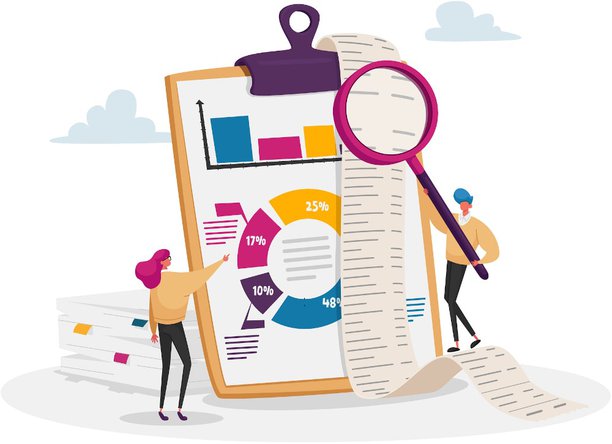Most Common Loan Terms and Their Explanation

Taking out a loan can be an intimidating experience. Understanding common terms used when taking out loans, however, does not have to be such a daunting task.
The language associated with taking out a loan often seems like navigating uncharted territory, but it doesn't have to be such a mystery. Knowing what some key terms mean can help you determine which type of loan works best for you, and understand exactly what you are getting into before signing on any dotted lines.
As a general term, loans are a type of financial product that allows individuals to borrow money from lenders. Depending on the borrower’s needs and preferences, there are various types of loans available in the market today. Generally speaking, common loan types include secured loans, unsecured loans, fixed-rate loans, variable-rate loans, government-backed student loans, and home equity lines of credit (HELOC).
Secured loans require collateral as assurance for repayment by the borrower. These may be items such as vehicles or other valuable assets; if the borrower defaults on payments, then their collateral will be used to cover any remaining debt owed to the lender.
Meanwhile, unsecured loans do not require collateral, but usually have higher interest rates because they come with more risk for the lender.
Fixed-rate loans offer borrowers a set rate over an agreed-upon period of time, while variable-rate loans allow borrowers to make changes to their payment amounts based on fluctuations in interest rates. Lastly, government-backed student loans provide college students with low-interest financing options, while Home Equity Lines of Credit (HELOC) enable homeowners access to funds using their property's value as security against defaulting on repayment obligations.
Interest Rate
The interest rate serves as an indicator to lenders and borrowers alike, signifying the time value of money in terms of risk associated with each loan agreement. This figure reflects both the amount that must be paid for credit and the profitability potential for lending institutions.
An interest rate may be fixed or variable depending on the type of loan being taken out; it can also vary from one lender to another depending on their individual criteria. Fixed rates are typically more secure because they remain consistent throughout the lifetime of the loan, while variable rates fluctuate according to market conditions.
In any case, understanding how much interest will need to be paid back is important information when considering taking out a loan.
Principal Balance
The principal balance of a loan is the total amount borrowed initially that remains unchanged throughout the repayment period. It does not include interest, fees, or other charges that may be added to the loan by the lender. The borrower must pay back the principal balance plus any additional amounts due as part of their monthly payments until the debt has been fully repaid.
By having a clear view of their principal balance, borrowers can make informed decisions about managing their loans and ensure timely repayment of their debts.
Prepayment Penalties
Prepayment penalties are fees that can be charged when a borrower pays off all or part of an outstanding loan balance before it is due. The purpose of these charges is to reduce the chance of borrowers taking advantage of favourable interest rates and then refinancing their loans with another lender.
Prepayment penalties typically come in three forms: percentage-based, flat fee, and blended rate approach. A percentage-based penalty involves charging a certain percentage of the amount prepaid; for example, 2% on any amount paid off early. Flat fee penalties charge a set dollar amount regardless of how much is prepaid. Lastly, a blended rate approach applies both types of fees - based on either a fixed percentage plus a minimum dollar amount or vice versa.
Credit Score Requirements
When considering applying for a loan, potential borrowers must be aware of the credit score requirements that may apply. Credit scores are used by lenders as an indication of how reliable and financially responsible a borrower is likely to be when it comes to repaying the loan.
Generally speaking, individuals with lower credit scores will often have fewer options available for obtaining loans, since they present more risk for lenders than those with better credit scores.
Annual Percentage Rate (Apr)
The annual percentage rate (APR) is a powerful yet deceptively simple concept. Picture this: you take out a loan, but the interest rate and payment terms are not fixed in stone. Instead, APR encapsulates all of the costs associated with taking out that loan into one single figure - it’s almost like looking at the total cost of an item on sale.
Knowing your APR can help you make informed decisions about whether or not to accept any financing offers from lenders. It's important to understand that APR includes things like fees and other charges; typically, credit card companies will list different APRs for purchases versus cash advances, as well as balance transfers.
Refinancing
Refinancing affords borrowers the opportunity to reassess their loan terms and make changes that better suit their current needs and circumstances. This can be done by restructuring repayment duration, reducing the interest rate, or changing from one type of loan to another.
In short, refinancing provides greater flexibility and control over how debt is managed and paid off. More importantly, it gives borrowers an opportunity to get out of financial difficulty, enabling them to create stability in the long run.
At Magical Credit, our team of professionals is always here to answer any questions you may have about your finances, or about taking out a potential loan.
We look past your credit history in order to provide you with the financial options you deserve. Reach out to a member of our team today to get started with ease.
Frequently Asked Questions
What Is the Difference Between a Secured and an Unsecured Loan?
A secured loan requires a borrower to provide collateral such as real estate or other assets that can be used as security against defaulting on their loan payments. The lender will have legal rights over this asset if the borrower fails to make repayments according to their agreement.
On the other hand, an unsecured loan does not require any form of collateral and relies solely on trust between the lender and borrower. As a result, unsecured loans often come with higher interest rates than secured ones, since they represent a greater risk for lenders due to there being no concrete assurance that the debt will be repaid at all.
What Are the Consequences for Defaulting On a Loan?
The repercussions for failing to repay a loan are varied and depend upon whether it is secured or unsecured; however, some general trends exist regardless of the type of loan taken out.
For instance, legal action may be taken against those who fail to make payments - this could include wage garnishment or bank account seizure if they owe money through court judgements.
Furthermore, late fees may be applied, which further increases the amount owed, whilst lenders can charge additional interest rates for missed payments too. In extreme cases, borrowers may even face criminal charges and jail time depending on local laws regarding outstanding debts.





